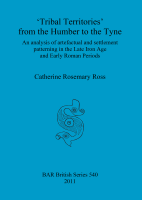Description
BOOK DESCRIPTIONThis study investigates the nature of indigenous settlement in northern England. The main focus is on artefactual and settlement patterning evidence. Chapter 1 covers the geological background, modern literature on the Brigantes and the history of archaeological work in the area. Chapter 2 considers the relevant literature and epigraphy: these are Roman in origin, and mostly post-date the period in question. It also considers Roman place-name evidence, discussing possible evidence for lack of linguistic change and the significance of the name Carlisle in relation to native society on the Solway Plain. This chapter reveals the weaknesses of the literature as evidence for the presence of tribes and regional identities in northern Britain. Chapter 3 discusses the artefactual and material evidence covering pottery, metalwork, taphonomy, querns, glass and coinage. Regional patterns based on use, decorative styles and the use of imported Roman goods and styles, are identified which may indicate the presence ofindigenous societies. Chapter 4 also identifies evidence for regionalisms by observing patterning in settlement sites themselves. In both cases factors affecting the archaeological record are highlighted. These two diverse approaches produce broadly similar results. In chapter 5 conclusions are drawn regarding indigenous society and possible regional identities. There are no grounds for asserting the existence of one large regional group in northern England. The combined evidence reveals a number of different regions of which six are thought to display sufficient variation to indicate the presence of regional identities. Where possible names drawn from Chapter 2 are notionally attributed to these areas. The book concludes that the Tees Valley is the region most likely to have been inhabited by a regional group who may have recognised the name 'Brigantes'; there is no evidence that their control extended further.











